Buy Bare-Eyed Cockatoos
Buy Bare-Eyed Cockatoos
The bare-eyed cockatoo is a slightly smaller member of the cockatoo family of parrots, and it is one that is somewhat easier to keep as a pet than its larger cousins. The ring of blue around the eyes gives these birds a slightly sleepy look, but these birds are actually quite social and active, much preferring to be out of the cage and interacting with their owners.
The bare-eyed cockatoo may not be the most colorful parrot in the world, but it more than makes up for it in personality. Sweet, playful, and intelligent, bare-eyed cockatoos are becoming more and more popular as pets. While cockatoos, in general, are among the more difficult birds to keep, due to a reputation as a “velcro bird” (sticking to their owners), if you have the time and determination to provide your bird with plenty of attention, you will have a wonderful companion.
Bare-Eyed Cockatoos
Origin and History
This white cockatoo is native to Australia and southern New Guinea. In the wild, the preferred habitat ranges from arid deserts to coastal plains, but these birds are rarely found in thick forests. Bare-eyed cockatoos are often found in urban areas and agricultural zones and maybe so prevalent that they create a nuisance. The bird was described and cataloged by English ornithologist John Gold in 1843.
Temperament
With a reputation for being goofy and clownish, the bare-eyed cockatoo is normally a very social bird that loves to play and interact with its owners. Intelligent and friendly, bare-eyed cockatoos make excellent pets for experienced bird owners who would like a cockatoo but don’t have the space to keep one of the larger species.
Among the cockatoos, this species is the best at mimicking human speech. It is common for a bare-eyed cockatoo to spontaneously mimic the vocal patterns of every member of the family.
Bare-Eyed Cockatoo Colors and Markings
Bare-eyed cockatoos are primarily white with touches of salmon-pink on their faces. They have horn-colored beaks and bare, gray-blue patches around their eyes. Males and females are identical, though males are slightly larger in stature and also have slightly larger eye patches.
Caring for Bare-Eyed Cockatoos
Although the bare-eyed cockatoo is a little less demanding than larger cockatoos, this is still a bird that is best suited for an owner who wants a constant companion. These birds crave social interaction with their owners and can resort to destructive behaviors if they feel neglected. Make sure that you have plenty of time to spend with the bird before bringing a bare-eyed cockatoo into your home.
As with all birds, the larger the cage the better. But even with a large cage, your cockatoo will need plenty of time outside the enclosure for play, exercise, and attention from you and your family. You serve as this bird’s flock, and your bare-eyed cockatoo will insist on interacting with you.
All cockatoos require regular bathing to keep their skin healthy and their plumage shiny. Carefully dry the birds in a warm room after bathing them. If you clip the wings, do so only on the primary feathers so they can easily fly and glide around the house. These birds will prefer to be out and about rather than remaining confined in their cage.
Feeding the Bare-Eyed Cockatoo
Cockatoos are prone to weight gain, so they should be fed a diet low in fat—fatty-liver disease can result, otherwise. Offer your bare-eyed cockatoo a fresh vegetable mix that includes leafy green produce, as well as root vegetables. Fresh fruit is a welcome and healthy addition to their diet, as are nuts such as almonds and walnuts. A formulated pelleted diet should also be on hand and available to your cockatoo. Of course, fresh drinking water should be available at all times as well.
Exercise
Bare-eyed cockatoos, like all cockatoos, need plenty of exercises. If you want to keep this bird, make sure that you’re able to give it a minimum of 3 to 4 hours of supervised playtime outside of the cage each day. On top of needing a chance to exercise and stretch its wings, your bare-eyed cockatoo is a very social bird that needs daily time with its owners in order to thrive and remain happy.
Providing toys to these birds is very important, and teaching them that toys are a fun part of their lives will make a huge difference for both your bird and for you. A cockatoo needs to learn to play independently, and toys and activities that it can manage on its own will reinforce your bird’s independence, as well as giving you some much needed time off. Wooden toys, as well as toys made of leather and sturdy hemp twine or plastic rope, will give the bird an outlet for using its substantial reserves of energy. Ladders and swings will also help to mentally engage your cockatoo and provide it with needed exercise.
Common Health Issues
Cockatoos are highly susceptible to psittacosis, a disease caused by the bacteria Chlamydia psittacine. Symptoms include lethargy, discharge from the eyes, and respiratory problems. Your bird will require antibiotics if it contracts psittacosis.
Nutritional deficiencies are also common with cockatoos and can be prevented with vitamin supplements.
The most common problems with cockatoos, however, are general malaise and behavior problems that occur when birds don’t receive enough attention and interaction with owners. Destructive behaviors and feather pulling are clear signs your bird needs more attention.
Be the first to review “Buy Bare-Eyed Cockatoos” Cancel reply
Related products
buy green indian Ringneck
buy green indian RingneckThe Indian ring-necked parakeet, also called the rose-winged parakeet, has been kept as a pet for centuries and remains a favorite companion bird today. A devoted owner will do best with this temperamental bird that requires a great deal of attention to remain tame. However, the Indian ring-necked will charm and delight the person who takes the time to appreciate its other qualities — a playful exuberance and a remarkable talking ability.
White Fronted Amazon for sale
White Fronted Amazon for saleWhite Fronted Amazon is one of the smaller of the Amazon species. This bird has an enormous confident personality. Even in the wild, it often approaches people, and in captivity, it frequently behaves to form close bonds with a single person, to whom it shows great warmth affection. Their personality, colorful plumage, and great talking ability—along with its relative makes this a favorite pet among the Amazon parrots. White Fronted Amazon has bright red rings around their eyes, Sparse patches of light blue can be found on their chests and bellies, and their wings are edged in deep blue and red.
Hand Reared Quaker Parrots
Hand Reared Quaker ParrotsQuakers are seasonal breeders which means they only breed once a year and often are ready around January. If you would like a tame hand raised quaker for a pet contact Birdsville to lock in one of our babies when they are ready.
The Quaker parrot, also known as the Monk or Grey-Breasted Parakeet, originated from southeastern Brazil through Uruguay to northeastern Argentina.
Quakers are small, only reaching 28 to 30 cm long, with a wingspan of about 48cm and a weight of 90 to 150 grams. The natural color of the Quaker is green, with pale grey on the forehead, cheeks, throat, and chest. There are several color mutations of the Quaker, although many color varieties are not yet commonly available. The blue mutation has become very popular within
Australia and many blue Quakers are now being kept as treasured companions.
Buy Black Palm Cockatoos
Buy Black Palm CockatoosBlack Palm Cockatoos are large, powerful birds that require the expertise of experienced parrot owners. While hand fed Black Palm Cockatoos make excellent, tame pets, they still require firm training and are not for those who are new to keeping large parrots. Simply put–these are bold parrots who need bold owners. Do not adopt a Black Palm Cockatoo if you are intimidated by large birds.
Reared Galah Cockatoo Babies
Reared Galah Cockatoo BabiesThe galah (Eolophus roseicapillus) is one of the smaller species of cockatoo and it has amazing colors. Its chest is bright pink, the wings are light grey and the crest is whitish pink. The bill and feet are bone-colored. This bird is very common in the wild in Australia. Australians call these cockatoos pink & grey galahs.
Buy Scarlet Macaws
Buy Scarlet MacawsThe scarlet is a “sassy” bird, filled with energy and personality. It’s highly intelligent, as well as a capable escape artist. It has distinct likes and dislikes, and can become a “one person bird” if care is not taken to train the bird otherwise.
Buy Goffin’s Cockatoos
Buy Goffin’s CockatoosGoffin’s Cockatoos bond strongly with their owners and require daily interaction to maintain their mental and emotional health. These birds simply cannot thrive if they are neglected, and will resort to destructive behaviors if their need for interaction is not met. Due to their personalities, Goffin’s Cockatoos are recommended for experienced bird owners that can spend significant time with them.
Buy Moluccan Cockatoos
Buy Moluccan CockatoosThe Salmon-crested cockatoo/Moluccan Cockatoo Has the following specifications
Mass: 830 g (Adult)
Scientific name: Cacatua moluccensis
Conservation status: Vulnerable (Population decreasing)
Higher classification: Cacatua
Buy Citron Cockatoos
Buy Citron CockatoosCitron Cockatoos are quieter than most cockatoo species, but they have big personalities and they love to play and interact with their owners. Inquisitive and affectionate, a Citron Cockatoo will want to be by your side as often as possible. Like most parrots, these birds need a lot of interaction with their owners, so be prepared to spend time with them.
Buy Hahns Macaw Online
Buy Hahns Macaw OnlineOur Hahn’s Macaws is charming,Intelligent and, are naturally popular pets. Potential owners need to be aware, however, that while the Hahn’s Macaws might be small, they pack all the personality of a larger parrot into that tiny bundle of feathers.
A Hahn’s macaw’s personality is much like that of its larger macaw cousins — bold, fun, active — but in a more manageable size, which makes this parrot a popular companion.






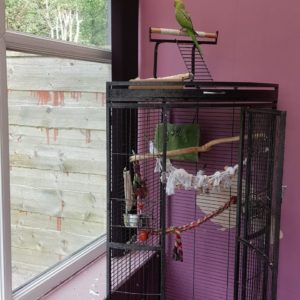

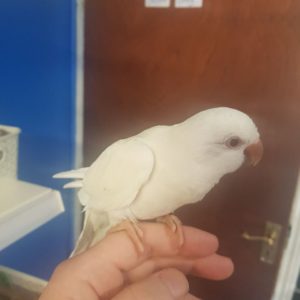
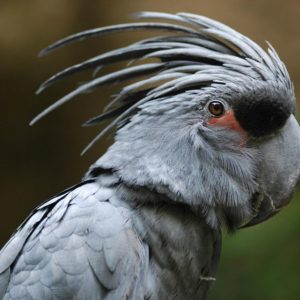
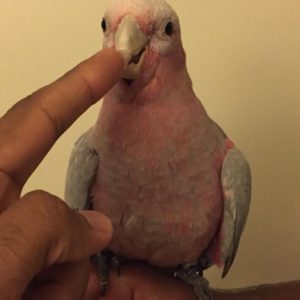



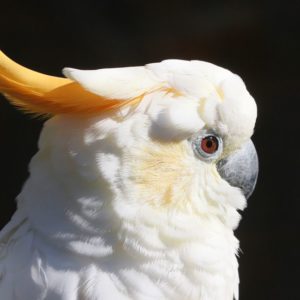
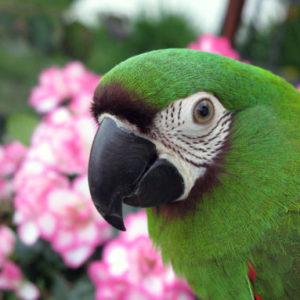

Reviews
There are no reviews yet.